at your local

see what’s new at your local gardening outlet








A beautiful rose with neat flat blooms with a button centre. The colour starts as a lovely soft pink with apricot central petals and fade to a creamy white. The flowers have a strong tea scent that evolves into old rose with delicious hints of lemon and grapefruit. Growth is approx. 1.2m in height on a strong, upright bush. Good for pots, hedges and borders, full sun or part shade. Named for the Brontë Society to celebrate the bicentenary of the novelist’s birth.


An amazing collection of breathtaking Hellebores has been sourced from all over the world and specifically chosen to suit Australian conditions. With twelve to choose from, there’s a colour to suit every home and garden. Flowering throughout winter and early spring, plant one or plant them all for the perfect way to brighten a dull corner or shady zone in the garden. These plants make excellent gifts and be kept indoors for up to 3 weeks in a well-lit room before being planted into containers or garden beds.



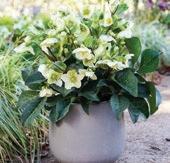


Position in areas with morning sun and afternoon shade. Plant in Searles Platinum Potting Mix for potted displays or Searles Planting Mix for garden beds.




They are vigorous growers with tidy habits, so no pruning is generally required other than to tidy old flower stems or leaves. For best results, feed with Recharge Pots & Gardens Controlled Release Fertiliser and again after flowering.



Soft buttercup
single blooms make a spectacular display en masse and give a light musky scent, with fresh notes of orange peel. Held in large, open sprays on a rounded, branching shrub. Good for sun or part shade, hedges and mixed borders with the flowers finishing in a great display of rose hips. It flowers freely, repeating regularly throughout the summer. A large, healthy shrub; its growth is rounded and branching. One for the bees.

page 04 | About the garden magazine
SIZE Approx. 125cmH
Images courtesy of www.pma.com.au
Leucanthemum White Lion - Breeding has come a long way with this classic shasta daisy known as Leucanthemum. It now does not need the long cold nights of winter to flower. White Lion can now send up its flowers naturally in autumn and flower right through into spring. This classic perennial will provide long window of flowering performance in the garden year in year out. Its mounding habit is ideal for potted displays and planted in multiples for garden colour. Plant in Searles Planting Mix for gardens.


Ozothamnus comes into full blush with large heads of rice size flower buds from winter through to spring. This compact Aussie native is easy to grow in a sheltered, sunny position in most well drained soils. For use in floral arrangements cut the stems when the plant is in full bud before the flowers open. To dry the flower heads, keep in a cool dark place until dried. Do not place in water. Rice flowers are perfect for use in floral arrangements. Look out for the pink form ‘Just Blush’ and white ‘Winter White’.
Everyone will adore this delightful collection - bred to be compact, fragrant and free-flowering, ‘Fairy Wings’ will bring a little magic to every garden. With striking blooms set above their scented foliage, the ‘Fairy Wings’ Collection is an ideal choice for small containers, courtyards, low hedging or pathways and planted either en masse or individually. Easily cared for and dry tolerant, it would be difficult to find a more enchanting collection for any garden

Plant in a sunny location in well draining soil. A light prune after the main flowering flush will encourage a bushy habit. A boost of Searles Flourish Flowers & Foliage Soluble Plant Food in late summer/early autumn will optimise performance.


















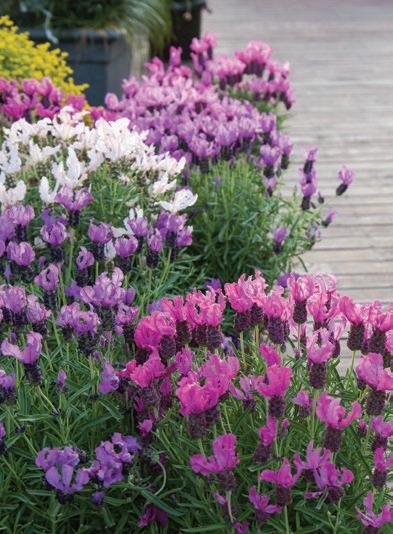









FULL SUN LOVES POTS SIZE 25cmH 30cmW
LOVES POTS SIZE 70cmH 70cmW Images courtesy of www.pma.com.au
‘Radiance’ FULL SUN
Whimsical’
The new Philodendron ‘Pink Princess’ is a hit with foliage enthusiasts.


Its hot pink variegation with deep green foliage streaked with pink, burgundy, lavender, purple and cream will vary with every leaf forming, a rare beauty you never know what colour the new leaf will be. This plant displays a vine habit, so will grow best with some support.

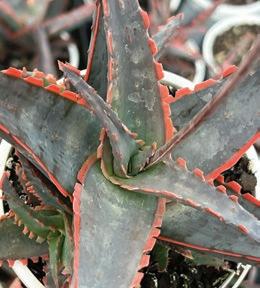
Prefers a bright indirectly-lit position indoors, or shade to part-shade outdoors in tropical climates.









Philodendrons in general like to be on the moist end, but of course should always be well drained.

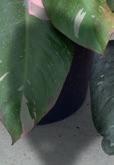

As with any Philodendron, they do best in a soil mixture high in organic matter. For potted colour, plant in Searles Platinum Mix for continued growth during the seasons.
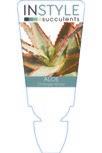



Fertilise regularly during the active growing season for best results. During winter, when growth has slowed down due to much shorter days, stop fertilising.



page 06 | About the garden magazine
NEW <<
Aglaonema ‘Valentine’ leaves are adorned with pink splashes of colour, bringing vibrant colour to indoor and shady places. This plant will flourish in a warm, humid and bright indirect light position. Keep the soil moist but not soggy.

Maranta Red Vein (Prayer plant) flourish in a warm position with medium filtered to soft light. If the leaves appear to be fading or losing their patterning and colour you may have them in too bright a position – move them to somewhere a little more sheltered. Marantas flourish in high humidity environments, mist occasionally.
Heart-leaf philodendron displays large heart-shaped green leaves in a trailing habit. Position them in medium to bright, indirect light, but tolerant of low light for healthy growth. Water when the top inch or two of the soil is dry. Don’t let it completely dry out.


Peperomia ‘Diamond’ is a trailing plant with beautiful light green leaves with attractive lighter green stripes. This plant, like all Peperomia, like to stay moist but not wet in the soil and need a bright indirect position to flourish. Allow the soil to dry completely between watering to help the root get air circulation.


For indoor potting of these plants, use Searles Indoor Potting Mix. With all indoor plants keep them away from heating/ cooling units as they are very sensitive sudden temperature fluctuations. Once a month you can wipe down the plants leaves using a damp cloth to clean away any dust.



 Aglaonema ‘Valentine’
Maranta
Peperomia ‘Diamond’
Heart-leaf philodendron
Aglaonema ‘Valentine’
Maranta
Peperomia ‘Diamond’
Heart-leaf philodendron
Conostylis ‘Silversunrise’ is a grass-like Australian native ground cover with ghostly grey leaves that make a real statement. With golden button-like flowers that appear in spring and continue through into summer, it makes the perfect dry garden companion for dark-leaved grasses and ground covers. ‘Silversunrise’ compact and tidy habit makes for real garden feature when planted singly or in a pot, and a real show-stopper when planted en-masse creating a drift of colour.
Fantastic groundcover plants for coastal and inland drought-proof gardens, Australian native garden and dry garden plantings.


Grevillea ‘Deua Gold’ combines rich golden nectar-filled flowers with graceful arching foliage. The bright flowers are borne in the depths of winter and beyond. Extremely tough plant, frost and heat tolerant, growing in areas which receive winter frosts right through to hot summers. Ideal addition to native gardens, container courtyard displays, coastal plantings and dry areas.

Loved for its unusual rippled foliage, Acacia ‘Fettuccini’ is a stylish, modern twist on a favourite Australian native. Evergreen, low growing, mounded weeping habit and easy-care, ‘Fettuccini’ is the ultimate foliage plant and perfect for all sorts of applications: within a mixed border, as a strikingly different container plant, as an informal hedge or even as a specimen in exotic, oriental or tropical style garden designs. The uses of ‘Fettuccini’ are limited only by your imagination.
Dry and light frost tolerant and grows well in most soil types that are well draining.























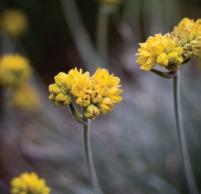


FULL SUN N DRY TOLERANT SIZE 75cmH 120cmW SIZE 30cmH 30cmW
<< Images and plant information on this page courtesy of www.pma.com.au SIZE 1.2mH 1.5mW
Bare-rooted plants are sold in winter when they are dormant, and this gives them the best chance of being replanted or transplanted successfully. Deciduous trees can be purchased as potted or bare root specimens. Bare root refers to no soil held around the roots at time of purchase. They are usually from cooler regions and are easier to transport and transplant into their final position in the garden. The bare root plants are not often seen after August as they have started to reshoot and are potted up by the nurseries. In tropical or sub-tropical regions, deciduous fruit trees are sold potted but are often in better supply in winter.
Apples and peach trees make you think of cool climate, but tropical varieties are also available. ‘Tropical’ varieties signal they don’t need cool temperatures to set fruit. Apple varieties such as ‘Tropical Anna’ and ‘Golden Dorset’ are excellent producers in the sub tropics and surprise you with their abundance in fruit, and are available in dwarf varieties. It is recommended you plant both varieties for cross pollination and increased yield. Varieties of tropical or low chill peaches, apricots, nectarines and a few cherries are available, to broaden your fruit tree experience. Though not a fruit tree, low chill varieties of blueberries are common now but with all these fruits, care should be taken to keep pests at bay. The Tropical ‘Angel Peach’ fruits early in the season and is spared from the worst of the fruit fly season.




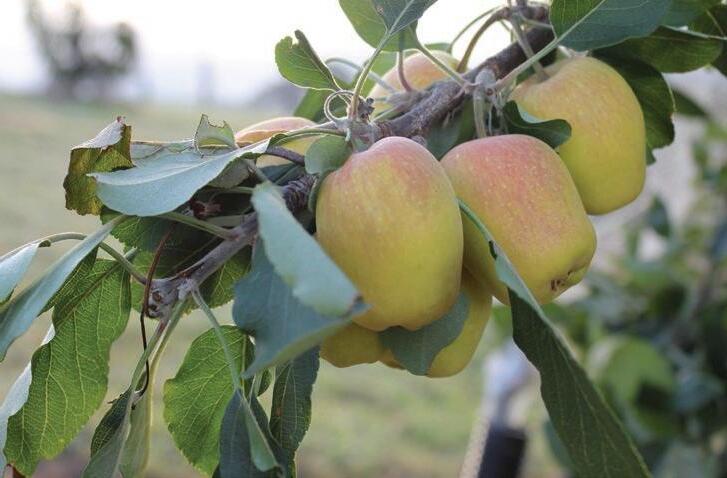
In cooler regions the availability of deciduous trees to plant is huge and the range large enough to always find something new, only the size of the yard restricts your planting. Dwarf varieties are ideal as they grow usually half the height of the original variety, but the crop is still very significant. Planting a fruit tree when it is deciduous causes less stress on the tree, as it is dormant and easier to transport. The general rule for a fruit tree is to be planted in full sun and allow plenty of room around the tree for when it is fully developed. Overcrowding will lead to damage, disease and pest issues.



For some deciduous trees, winter is not their main planting time, such as Ficus Brown Turkey or Black Genoa, as they are not glamorous as bare branches. Depending on the region some fruit trees do not lose all their leaves or lose them for only a short time.

Reputable garden centres should sell only quality stock but it’s still a good philosophy to examine before you buy. Avoid specimens with brittle branches that can break easily; they should feel sturdy and fairly flexible. Also, avoid specimens with visible damage or disease. Always read the labels to know their mature size and give the plant adequate room to grow into the space you allot them.

Some Australian native plants have scents, there is even one called Smell of the Bush (Mallotus claoxyloides), though it is not to everyone’s sense of aroma. In Tasmania and in some part of the mainland, the Sweet Scented Kunzea has a gorgeous honey perfume. Everyone knows one of the most valuable, versatile Lemon Myrtle (Backhousia citriodora), used in cooking, teas, body lotions, laundry powders and cleaning aids. A relative of this is the Backhousia anisate with a lovely aniseed-liquorice aroma and taste and again used in cooking and tea, as well as having anti-microbial properties. The leaves are the world’s most concentrated, naturally-occurring source of citral (a lemon fragrance found in lemongrass and other lemon-scented plants), which gives them their irresistibly delicious, lemony fragrance.
The lemon myrtle has a couple of close relatives that are also widely sought after for their aromatic and culinary uses; Aniseed myrtle (Syzygium anisatum), for its aniseed flavoured foliage and Cinnamon myrtle (Backhousia myrtifolia), for its sweet, spicy scented foliage. The leaves of any of these plants can be used fresh or dried.


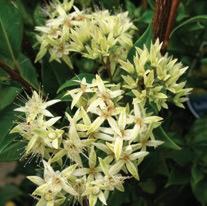


A wonderful addition for a sensory garden or perfumed garden is the Australian native mint bush (Prostanthera ovaolifolia). The gorgeous purple flowers attract the pollinators, and the foliage has a wonderful minty smell when you brush by it. The chocolate lily (Arthropodium strictus) has a flower that smells just like

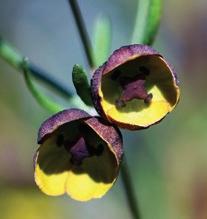

page 10 | About the garden magazine
Pink rock orchid
Boronia megastigma
Cinnamon myrtle
Leptospermum petersonii
Grows 6m tall in gardens in full sun.

















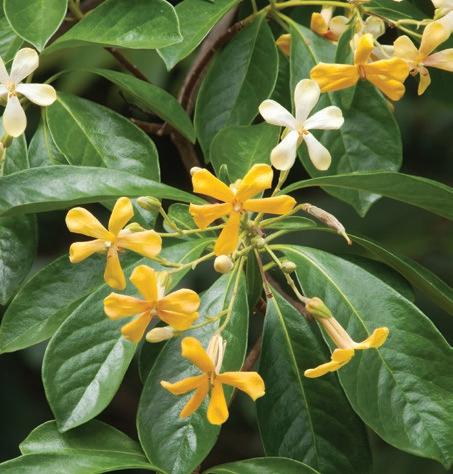

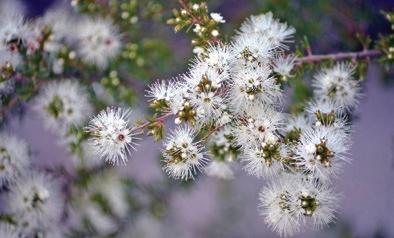

Native



chocolate and there are many recipes using this plant. There are a huge variety of Australian native plants that are worthy additions to your garden, be it a tree such as Native Frangipani (Hymenosporum flavum) or Tea Tree (Melaleuca alternifolia) which produces the tea tree oil. Shrubs such as Leptospermum petersonii ‘Little Lemon Scents’, Boronia megastigma, Boronia heterophylla, or Wax Flower (Philotheca myoporoides)
The perfume is not there for us alone, it brings in the pollinators and the wildlife, to assist in spreading their seeds. The flowers may not always be significant enough to draw attention and so the perfume is the draw card and announces there is nectar or pollen to be had. The Pink Rock Orchid (Dendrobium kingianum) uses this method even though the floral displays on the plant are magnificent.
About the garden magazine | page 11
Wax flower (Philotheca myoporoides)
Frangipani
Sweet scented Kunzea
Lemon Myrtle (Backhousia citriodora)
Prostanthera ‘Minty’ SIZE 1.8mH FULL SUN <<
The new Pohlmans ‘Patio & Pots Range’ is a collection of exciting new compact plants bred for pots on your patio or small garden spaces. Small in plant size, but large on flavour with loads of fruit! This new collection in their Gourmet Vegie range makes choosing vegetables for gardening in small spaces easy and rewarding. Look out for ‘Tomato Patio’ or ‘Cucumber Patio’, both of which can be planted in pots or hanging baskets.

Winter salad greens grow fast, require minimal space to grow and can be harvested as often as they sprout. Grow popular lettuce varieties of romaine (cos lettuce) and red and green coral. ‘Salanova’ lettuce variety is a multicut lettuce, meaning they have a small core which enables all the leaf to be eaten, perfect for regular harvesting.

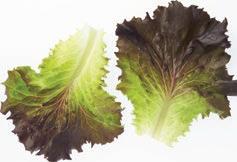
Many micro-greens are ready to harvest at the micro size stage a month after planting. Popular in the micro-green range are rocket, baby beetroot leaves, tatsoi, mizuna, endive, watercress, mustard greens, red Russian kale, chervil, etc. Silver beet can be grown in warmer areas of Australia such as tropical and sub-tropical zones during winter. Silver beet grows ideally in soil with a temperature of 10˚C to 30˚C. Although from the same family Baby Spinach is more tolerant of the cold and can be planted throughout winter. Bok choy is a great super-grower because it can produce a mature harvest in around 30 days. Plant now in all climatic zones.
Start your winter herb kitchen with perennial thyme, rosemary, sage, chives, parsley and bay.


Leek, spring onions and shallots all are space savers and quick growing. They are all suitable to be planted in all climates zones.


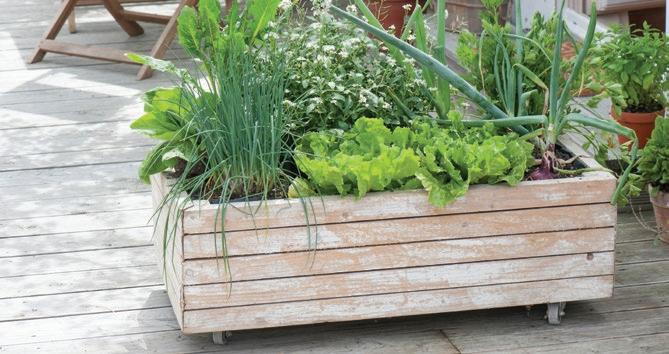
For warmer climates and patios or balconies protected from frost in cooler climates, small varieties of tomatoes such as such cherry, will successfully grow and have ruby red globes for






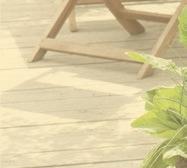
page 12 | About the garden magazine <<
Cabbage ‘Mini’
Kandy Krush Kale
‘Snacksicums’
– mini capsicums that continuously fruit all season long. Available in 125mm pots and three vibrant colours.
you in several weeks. Dwarf beans can be grown at this time, under similar conditions.

























Peas and snow peas are best grown in cooler seasons. Being a climber, support their growth by installing a trellis before planting - a great vegetable for vertical gardens. Liquid feed with potash to boost flower and pod production. Harvest in 9-11 weeks. Pick the pods every day to increase production.

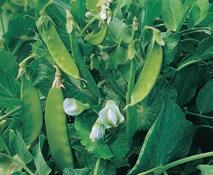
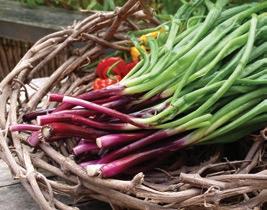



Sometimes it is hard to find single pot vegetable seedlings, so team up with a keen gardener friend or neighbour to share multi-pack seedling trays. If you happen to grow more than expected seedlings from seed, there too will be more than willing to take them off your hands.
Vegetables in pots need to be positioned where it receives 6 hours of full sun per day for better plant growth and flowering.
When the weather cools the growth of many vegetable crops slows down, making it the perfect time to grow multi-leaved crops like cabbage, as well as those that would otherwise become too leggy or bolt straight to seed. While lettuce and many other garden staples are stalwarts of the winter garden, if you haven’t already, explore the colours and flavours of Asian greens. Fast-growing, highly nutritious and easy to grow, most are part of the Brassica family and all bring something special to the kitchen and your culinary creations.
Mizuna is a great addition to salads, a wonderful garnish on stir frys and its mild flavour, with a hint of pepper, and vibrant bright-green colour adds visual appeal to all dishes. Ready to pick in just 6 weeks, Mizuna yields roughly 500g per plant.

Pak choy’s thick, succulent leaves taste best when grown quickly in a rich, moist soil, and harvesting in about 8 weeks yields 110g per plant. Try planting or sowing every 3-4 weeks for a continual harvest.
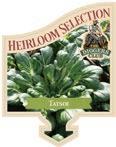
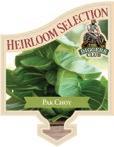

Tatsoi’s both beautiful and delicious. Growing in a stunning rosette pattern with deep-green spoonshaped leaves that can be harvested individually and eaten young in salads or steamed when older, you can also try Yukina, a larger version of Tatsoi, which is often harvested from the outside in, to extend cropping.
Highly versatile, growing Asian greens at home is not only healthy but also cost-effective, and it’s a fun and satisfying way to fill your kitchen with highly nutritious produce from the garden.

If you are a little short on space, try Cabbage ‘Mini’ or the upright Asian style Cabbage ‘Mini Wombok’ which is popular in kim chi and noodle salads. Both are fast and easy to grow and are highly versatile additions to the garden and kitchen.
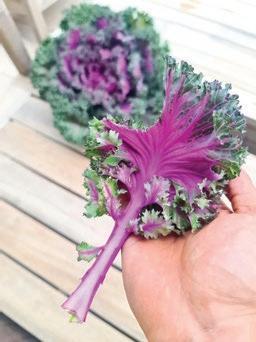

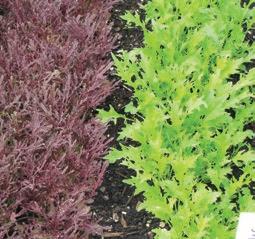
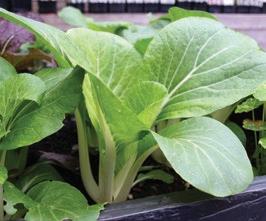
 Great for small spaces
Great for small spaces
No fuss, mix together cake for treat day
simple
recipes made from garden kitchen produce

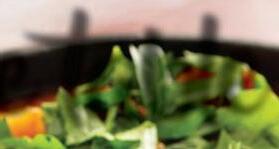
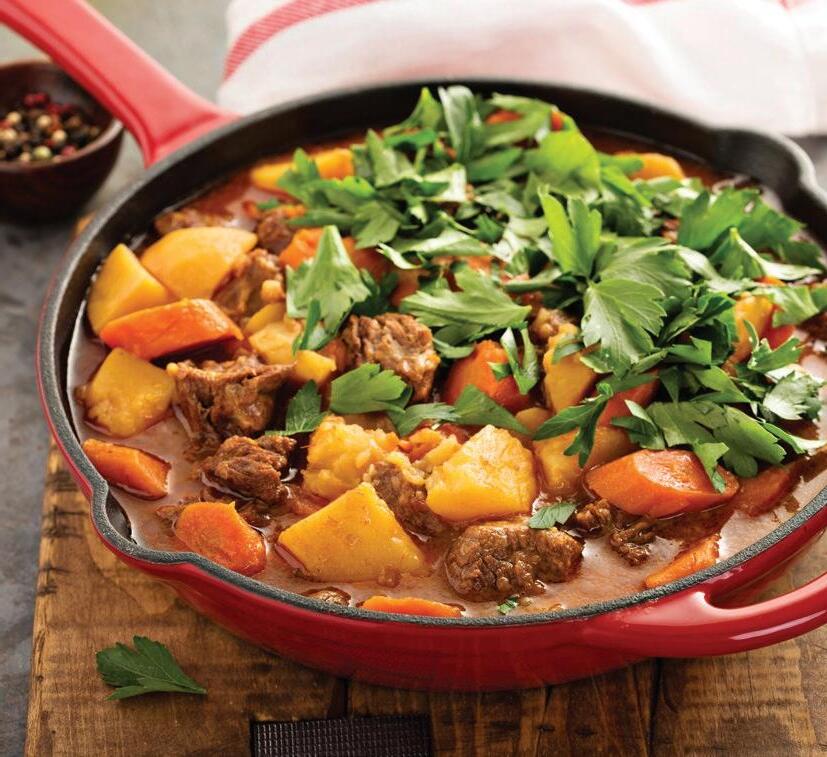
200g dark cooking chocolate, finely chopped
120g unsalted butter
3 eggs
1/2 cup brown sugar
1 1/3 cup plain flour
1 1/2 teaspoon baking powder
1 tbsp cinnamon powder
1 pinch salt
2 pears, cubed
Icing sugar
page 14 | About the garden magazine
1 1/2 tbsp extra virgin olive oil
1.2kg gravy beef, cut into 3cm pieces
1 large brown onion, finely chopped
2 carrots, peeled, finely chopped
2 medium potatoes, cubed
3 garlic cloves, finely chopped
1 tbsp sweet paprika

2 tsp Beef Stock Powder
125ml (1/2 cup) Tomato Passata
4 dried bay leaves
2 large fresh rosemary sprigs
20g butter, at room temperature
2 tbsp plain flour
Fresh Italian parsley leaves, to serve
Ingredients
Sweet potato, cubed 400g tin chickpea, drained Quinoa, cooked Kale leaves, loosely worn Olive oil
1 tbsp Nigella seeds
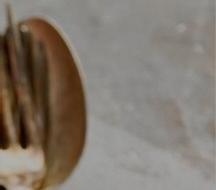
Salt, to taste

Prepare
Roast sweet potato in oven until cooked. Cook quinoa as per pack directions.
Gently mix together sweet potato, chickpea, cooked quinoa and kale. Sprinkle olive oil over top and toss. Season with salt and Nigella seeds.

for more recipes, visit

www.aboutthegarden.com.au


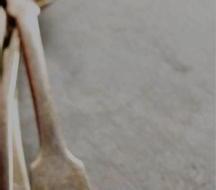

About the garden magazine | page 15
Many gardeners have annuals they replant every year and the majority buy seedlings or seeds from the stores. A fun activity and one that is very cathartic, and so easy to do is to collect the seeds from your own plants to re-sow.
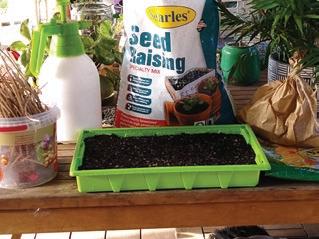
Start with dry seeds varieties, with no mushy pulp, as these are the easiest to collect and store. Think of the annuals you replant yearly, marigolds, salvia, pansy, viola, lettuce, parsley, calendula, sunflowers, poppies, zinnia, sweet pea, and nasturtiums to name a few.

The trickiest part of the process is to know when to collect the flowers to start processing the seeds. Refine your timing so you don’t collect them too early or too late. Too early and they will not develop into viable seeds and too late they will self-scatter or the insects devour them. Wait for the flower to finish, then brown off and start to shrivel. In some flowers they will develop a bulge, as with pansy and viola and this is where the seeds develop. Wait till the bulge has ripened to its full potential, it will start to dry out and shrivel, now is the time to pounce. With plants like marigolds the flower will brown and dry up, before it has gone too far and let the seeds fall, start collection. With other plants like lettuce, the flower goes from a yellow to a brown to a fluffy ball, now is the time to strike.
Paper bags and a pen are vital, as the seeds won’t sweat and spoil if there is excess moisture. Name the bag as a record of which plant it was, and the date collected. Pick off the flower stem and place in the bag. Hang these bags in a cool, dry place out of direct sunlight, as heat and humidity can shorten the life of the seeds. Some hang the stems in bunches in the laundry and wait to just before the seed drop, before they

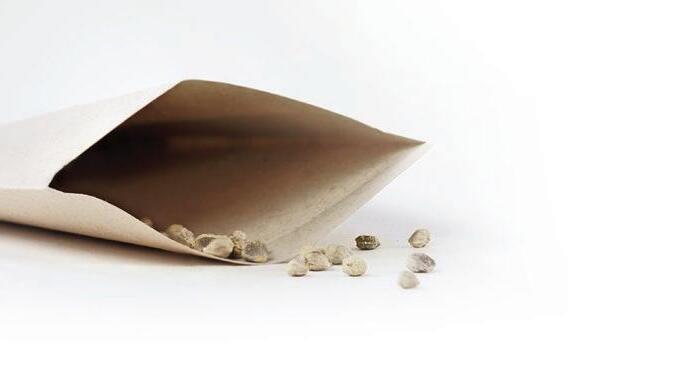
page 16 | About the garden magazine
Storeseedsindrypaperbag
Sow seeds in trays
Harvesting sunflower seeds

bag them. This leads to the chance you forget to keep an eye on the dried flowers, and you have a floor of seeds.
After two to four weeks of storage, empty the paper bag into a sieve. Using the sieve remove the leaves, petals, and any other rubbish, leaving just the seed. If you are using them soon, store in an airtight glass jar. If you are keeping them for a long period, you may need to put them in the freezer for up to two days to kill any pests that have made the seed their home. After the freezer then keep the glass jar in a cool, dry place out of direct sunlight and many use the refrigerator for longevity. A little research may be needed as some species of seed do not want to be put into the freezer.
Collecting seeds is no guarantee of the colour being the same as the parent plant, as the cross pollination by insects affects this. You may get a variety of colours from the seeds collected and this is part of the joy. Seeds do not last forever, so sow them in the next planting season and perhaps with a few purchased punnets if there are new flower colours available. Use your seeds to have succession planting and for longer flowering season in the garden. When sowing your seeds use Searles Seed Raising Mix as strong composted soil mixes can burn seeds starting to sprout. Seed Raising Mix is designed to provide high germination performance and healthy growth up to transplanting. Once they have developed four leaves, they are now seedlings and can tolerate being transplanted out and fertiliser. Consider swapping your seeds amongst friends for more variety or a lovely handmade gift.
ANSWER TO YOUR POSSUM PROBLEMS

Year after year many gardeners are devastated by the damage Possums do to buds, flowers and new growth on their roses, shrubs, trees and herbs. However for over 30 years many rose growers, both amateurs and commercial and others ‘in the know’, have used and confirmed D-TER Animal & Bird Repellent’s real success.
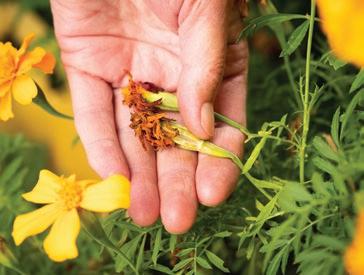
“I have used your D-TER for 6 months now – am thrilled at the results. It’s the only product to keep Possums off our roses on our 1.5 acres.” Marion C. Vic.
“D-TER has made the difference between the joy of roses and the despair of seeing them stripped by Possums and Parrots … Thousands of visitors flock to see our garden and the roses in particular in October and November each year, I am so often asked if D-TER really works, I only need to point to the wondrous display of cascading roses as proof.” Heather C. NSW.
“I have used D-TER for the past 3 –5 years and found it the only one to ‘deter’ the 10,000 (sic) possums on my quarter acre block.” Myra M. Vic.

“We purchased your D-TER Animal & Bird Repellent last year to reduce the activity of possums on the roof of our home. The product has been very effective…..I wish to purchase a further 1Kg jar. Neil S. NSW

Importantly, D-TER is registered for use against all animals and birds, is extremely effective in repelling them, environmentally sound; very safe, not a poison, has no withholding period and does not harm humans or the creatures.
Protect herbs, vegetables, trees and shrubs from possums, kangaroos, wallabies, rabbits, hares, bandicoots, deer, foxes and other wildlife.
Protect vegetables, fruit trees, ornamentals, seedlings and buildings from cockatoos, crows, ducks, pigeons, rosellas, starlings, swallows, other birds, fruit bats and microbats. Protects homes, gardens, patios, shop fronts and paved areas from both dogs and cats or rats and mice.
Protects one plant or a whole area — perimeter &/or band sprays.
Repels — without harming animals or humans. Not considered a poison — no withholding period. Easy to use — spray on. Effective when dry.
Safe, Proven and Effective.
Available in 100g, 1Kg & 4Kg Sizes.

is unique. Reject products said to be "just as good", nothing is at all "like it".
For more specific information send 2 x $1 stamps, Please mention your problem, post to: D-TER, Dept. A, PO Box 3, Oyster Bay, NSW 2225. Enquiries: Phone: (02) 9589 0703 Fax: (02) 9589 0147
For further information contact Lorac Australia Ph. 02 9589 0703
GG20-260/02
About the garden magazine | page 17
Marigoldseedsareinside thespentflower
> Winter citrus: orange, lemons, limes, kumquats, mandarins and other citrus tree trees can be ideally planted now. Some are available as bare root plants. Follow the directions on the plant tag for successful establishment. Plant in rich nutrient soil and fertilise these hungry feeders often with regular watering and plenty of citrus specific fertilisers.
> Plant easy growing winter broccoli and cauliflower. Enrich the garden bed with 5 IN 1 Organic Fertiliser, then liquid feed weekly with SeaMax Organic Liquid Fertiliser to keep their growth strong. Harvest heads young and protect by treating any visual pests and diseases early. Net crops to reduce the risk of cabbage white butterfly and caterpillars.
> Citrus care: Treat citrus for white louse scale, use Searles Lime Sulphur. Prune gall wasp off citrus trees and burn or bin them to stop the breeding cycle.

> Sub Tropics/Tropical fruit for winter: plant olives, banana, avocado, citrus (kumquat, lime, mandarin, grapefruit, lemon, orange, tangelo), pineapple, custard apples, apples (warm climate varieties).
For cooler climates try apples, grapes, olives, avocado, citrus (kumquat, lime, mandarin, grapefruit, lemon, orange, tangelo), cherries and pears.
> Don’t forget lettuce, kale, leek, cabbage, spring onion, and many Asian greens like pak choy, mizuna and tatsoi grow well and fast. Harvest young and regularly for a better taste and to bring on more leaves. Winter herbs such as, rosemary, chives, rocket, sorrel are in abundance now. Check for caterpillars on leafy greens such as lettuce, cabbage and broccoli. Control with Searles Bug Beater
> Brussels sprouts need the cold weather, particularly frosty areas to keep their sprout buds tight. Warm days will loosen their leaves affecting their quality.
Sub Tropics/Tropical
• Broccoli
• Cauliflower
• Cabbage
• Lettuce
• Onions & leeks
• Beetroot
Cooler Climate
• Broccoli

• Cauliflower
• Cabbage
• Leek
• Brussels sprouts
• Onions & leeks

• Beetroot
• Carrots
• Pumpkin
• Radish
• Sweet corn
• Strawberry
• Tomatoes
• Zucchini
• Carrots
• Turnip
• Potatoes
• Radish
• Broad Beans
• English spinach & Sliver Beet
page 18 | About the garden magazine
allzones
> Many grevillea species and hybrids reach their peak flowering during the cooler months. Search through your local gardening outlet for the great bloomers. Give them some fertiliser during winter for continuing flower bursts throughout winter and into spring.
> The Camellia japonica show their true floriferous magnificence during the winter months. Like other camellias, the japonica is long-lived, versatile and easy-care. All camellias are ‘acid-loving’ plants. To be confident growing camellias in pots or garden beds, plant them in Searles Azalea & Camellia Specialty Mix. This mix will help maintain the ideal level of soil acidity for camellias, as well as providing all the nutrients needed for excellent growth, vigour and flowering. Always mulch well after planting and reapply mulch once or twice every year.
> Try these winter flowering natives in your garden. Lechenaultia formosa, wattles, banksias, croweas and correas, Leptospermum ‘Cardwell’, grevilleas, Geraldton wax and Chrysocephalum apiculatum


> Hardenbergias are fast growing climbers to drape over fences, pergolas or a wall for dense winter foliage and blooms. Performs well in full sun, dryish soil and loves a good prune after flowering. Available in purple and white blooms.

Winter flowering fuchsias look great draped over hanging baskets.

> Winter sunlight is reduced, so move indoor plants to a brighter, warmer position in the house. Let the potting mix dry out before watering to reduce fungal and root diseases. Keep plants away from heaters.
> Plant winter flowering annuals such as pansies, violas, cyclamens, primroses and kalanchoe. Pansies & violas need good nutrition to support their profuse flowering habit, so feed them fortnightly with Searles

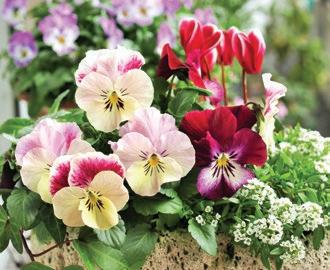
Flourish Soluble Plant Food
> Cyclamen are the perfect plants for indoors or shady areas in winter. They have a long, continuous flowering period — usually from May until October. Cyclamen aren’t fussy. Even though cyclamen grow fantastically indoors, they love the cold; it seems to refresh and revitalise them. Every few days give your cyclamen a drink and put them outside for the night. They will appreciate the cold, frosty night more than us! Never let your cyclamen sit in a saucer of water permanently — this will cause a yellowing of the leaves, rotting of the stems, and eventual death of the plant. Cyclamen appreciate a feed with a liquid fertiliser. If done fortnightly with Searles Flourish Liquid Fertiliser, cyclamen should continuously bloom until mid-spring.
> Hellebores are a treat for cooler climate gardeners. Easy to grow, frost hardy and dry tolerant once established, hellebores are perfect for pots and small, shady courtyard displays during winter. They usually grow best in a position with shade for most of the day. Plant in Searles Platinum Potting Mix for potted displays or Searles Planting Mix for garden colour.
About the garden magazine | page 19
Rondeletia
Hamamelis mollis
Magnolia
by climatic


zone
> Grevilleas are very easy to grow and are ideal in a dry “water wise” garden. Most of them flower from winter to spring but some will give you blooms all year round. All Grevilleas love full sun and dry feet. Grevilleas like a soil low in phosphorus, so plant them in Searles Native Plant Mix
Plant cool loving vegetables such as broccoli, beetroot, peas, cauliflower, cabbage and zucchini. Plant spinach, silver beet and lettuce. Fertilise fortnightly with SeaMax® Organic Fertiliser and keep the water up to them to ensure an excellent crop. When planting allow plenty of room for the plant to grow to full size.
Australian natives like acacias, banksias, ozothamnus (Rice flower), Leptospermum ‘Cardwell’ and melaleucas will start to bloom now.
Camellia japonicas, gordonias, hardenbergia, eremophila (Emu bush) and winter flowering salvias are flowering now in gardens.
Keep winter gardens protected.
• Mulch gardens to keep soil temperatures moderated.

• Liquid feed with a two-in-one fertiliser and tonic, SeaMax Organic Fertiliser to improve health vigour to combat temperature extremes.

• Move cold vulnerable pot plants to a more protected area until the last frosts have passed.
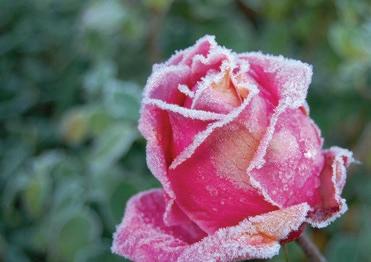

• Keep indoor plants away from heaters.
• Move indoor plants to receive more light during the winter months.
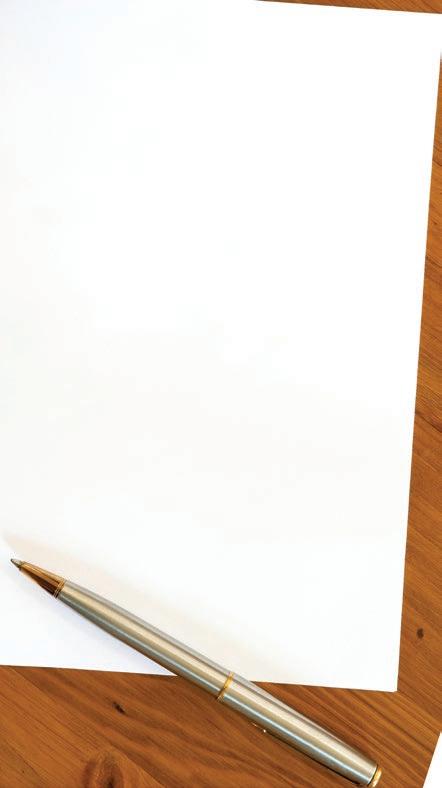
• Reframe from pruning frost bitten plant leaves until the last frost has passed.
Plant chamomile, comfrey, dill, garlic bulbs, lavender, lemon balm, marjoram, mint, parsley, oregano, sage, and thyme.
Plant pansy, petunia, lavender “lace series’, mona lavender, kalanchoe and limonium for potted colour.
Rockhampton Hervey Bay Brisbane Toowoomba Warwick Grafton Port Macquarie For more information for what to grow in your climatic zone visit www.aboutthegarden.com.au page 20 | About the garden magazine Plant hippeastrums & daylily bulbs now for spring blooms. Plant in a sunny spot.
> Time for planting petunias, pansy, snapdragons, cyclamen, gerbera and other annuals for potted colour. Plant in Searles Platinum Potting Mix, filled with nutirent-rich compost and 18 month fertiliser.
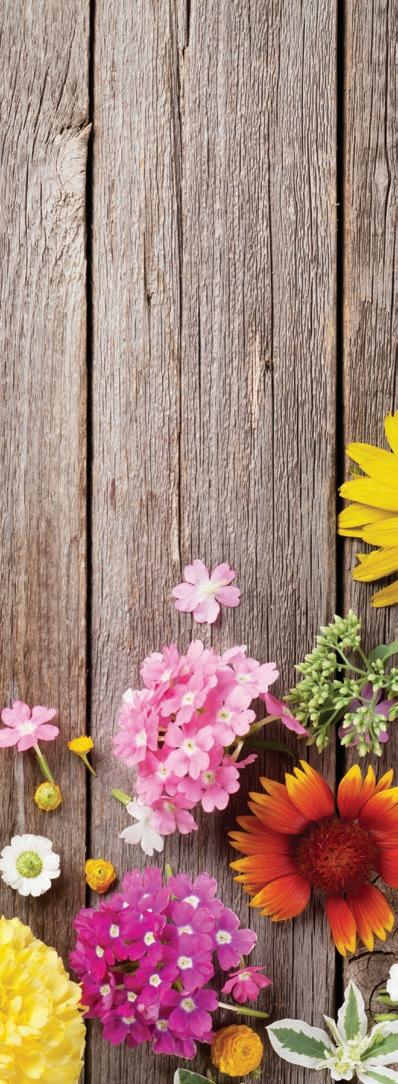
> Coleus are still putting on their foliage display during winter. Boost foliage plant shine and vigour by liquid feeding with Searles Indoor & Greening Soluble Plant Food
> Looking for a small hedge to approx 50cm? Tabernaemontana comes in three colours Little Emerald, Little Goldie & Little Sweetheart. Evergreen & flowers all year round.



> Give indoor plants a light prune to reinvigorate growth when spring arrives. Check plants for aphids and mealybugs. Spray with Searles Ecofend Vegetable & Garden Spray (Organic registered) to control and protect plants.
> Harvest ginger & turmeric.
> Lavender enjoys flowering during winter in the tropics.
> Plant Asian greens, beetroot, carrot, coriander, chives, mint, lemongrass artichokes, kale, lettuce, radish, rocket, silverbeet spring onion and tomatoes. Feed herbs, leafy and winter vegetables fortnightly with Searles Flourish Vegetable & Tomato Soluble Plant Food to aid production.
> Prune plants which cease flowering in autumn. Heavily cut back gingers, cannas and heliconias as flowering finishes and they enter their dormancy period. They will reshoot when temperatures warm up in late winter to early spring.
> Enjoy flowering natives like cocky apple, kapok, kurrajong and woollybutt.


or follow us on

Name: ...............................................................................
Age: 25–35 36–45 46–55 55+

Address: ...........................................................................
.................................... City: ............................................
State: .............. P/code: ...................
Phone: ..............................................................................

Email: ...............................................................................
1 year ($19.00) 2 years ($31.00)
Payment Methods
Charge this to my: Visa Mastercard
Card no:
Card holder’s name:..........................................................
Expiry date: ................Signature: .....................................

OR Pay by direct debt. We will send you account details via email. Cheques will not be accepted.
Please send this form to: About the Garden P.O. Box 183 Kilcoy Q. 4515 atg@aboutthegarden.com.au Ph:(07) 5422 3090
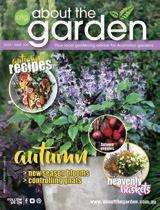
FOLLOW US ON

Winter 2023
Darwin Cairns Rockhampton Brisbane Emerald Longreach Mt. Isa
www.aboutthegarden.com.au
or subscribe online www.aboutthegarden.com.au/purchase or scan QR code
‘Little Emerald’
> Gardening outlets will be full of cyclamen, hellebores, camellias, michelias, lavender, senettis and winter flowering annuals like pansies, violas, snapdragons, alyssum, lobelia to decorate patio spaces and garden colour. Choose young plants with many flower buds to maximise flowering display time.

> Plant winter flowering natives such as banksia, grevilleas, wattle and callistemon to attract birds to your garden. Plant in Searles Native Specialty Mix for the right low phosphorus nutrient ratio.
> Now’s the time to plant gorgeous ornamental and fruiting trees. See page 9 for planting and care advice for these bare-rooted beauties.

> Plant winter greens such as broccoli, cauliflower, English spinach, Chinese greens, cabbage, Brussels sprouts and peas. Plant straight into Searles Herb & Vegetable Specialty Mix for 9 months feeding to produce a bumper crop. Water daily, especially leafy vegetables to keep their taste from going bitter. Keep picking to encourage more cropping so you don’t run out.
> Perfect time to prune repeat flowering roses, hydrangeas, crepe myrtles, deciduous fruit trees, wisteria and grape vines. Don’t prune spring flowering shrubs or you’ll miss out on their spring blooms.
> Start treating your lawns for bindii with Searles Ultraweed Turf weedkiller before you see painful burrs. Kill the weed before it sets seed then you will have less bindiis for next year to contend with.
> Plant pansies, polyanthus, poppy, primula, ranunculus, snapdragon, begonia, calendula, cineraria, hellebores, correas, croweas, cyclamen, lavender, lily of the valley shrub and violas for winter colour. Camellia japonicas are playing the flowering game and flower during winter and into spring.
> Stunning waxy snow coloured berries adorn the Snowberry deciduous shrub from summer through to winter followed by small clustered white to pink flowers covering the shrub in spring. Snowberry shrubs can withstand a myriad of weather variances from the driest climates to areas of constant frost.
> Witch hazels produce a canopy of sweetly scented, spidery, yellow orange or red flowers on their deciduous branches during winter. Tolerates heavy frosts in acidic soils. Remove deadwood.
> Plant bare-rooted roses, deciduous trees, shrubs and fruit trees using Searles Fruit, Citrus & Rose Specialty Mix


> Beetroot are ready to harvest and compliment winter soups and stews, Also plant artichoke, asparagus, broad beans, broccoli, Brussels sprouts, cabbage, carrot, cauliflower, celery, chives, curry, dill, endive, leek, lettuce, mint, onions, parsley, peas, snow peas, sage, silver beet, spinach and radish.
For more information for what to grow in your climatic zone visit

Hobart Rockhampton Hervey Bay Brisbane Warwick Grafton Port Macquarie Sydney Canberra Melbourne Wodonga Adelaide Geraldton Perth Albany Port Augusta Esperance Moree Armidale Orange
Emerald Rockhampton Gladstone Hervey Bay Brisbane Toowoomba Warwick Port Macquarie Sydney Melbourne Wodonga Adelaide Albany Esperance Armidale Tamworth TM page 22 | About the garden magazine
> Sow ageratum, alyssum, cineraria, cleome, cyclamen, forget-me-not, Iceland poppy, lobelia, lupin, marigold, pansy, petunia, phlox, primula, stock, verbena, wallflower and zinnia.


> Protect frost sensitive plants by moving pot plants into warm sheltered position, cover garden plants overnight with a sheet and remove in the morning and resist pruning until the last frost is over. Apply SeaMax Organic Fertiliser to help improve frost tolerance. Check for mildew and blackspot on roses and ornamentals. Treat with Searles Rose Pro

> Native hardenbergia provide bright purple colour in winter. Arctotis, hardenbergias, camellias, euphorbias, wallflower, winter flowering salvias and French lavender to add extra winter colour.
> Be mindful of leaf curl and other fungal diseases on stone fruit such as peaches and nectarines. Spray with Copper Oxychloride at the first sight of flower buds.
> Winter is a great time to plant leafy and root vegetables like artichoke, asparagus, members of the brassica family (including broccoli, cauliflower, brussel spouts, cabbages, english spinach, lettuce), broad bean, carrot, onion, pea and radish. Asian greens, coriander and rocket love the cold. Plant chives, curry, dill, mint, parsley, sage and thyme.
> For elegant winter blooms plant hellebores, lavender, winter flowering salvias, chrysanthemum, cosmos, dahlia, dianthus, everlasting daisy, gaillardia, gazania, geranium, gerbera, impatiens, kangaroo paw, marigolds, nasturtium, petunia, portulaca, rudbeckia, salvia, snapdragon, sunflower, torenia, verbena, wallflower and zinnia. For best results, feed with Searles Flourish Flowers & Foliage during flowering season.



> Fertilise bulbs with a high potassium fertiliser in readiness for spring growth. Searles Flourish Flowers & Foliage Soluble Plant Food.

> Harvest citrus trees and other winter fruiting trees such as tamarillos. Once fruiting has finished, prune dead and cross over branches to improve fruiting for the following year.
> Extend your vegetable patch by planting artichoke, asparagus, broad bean, beetroot, broccoli, cabbage, carrot, lettuce, onion, parsnip, pea, potato, pumpkin, radish, rhubarb, silver beet and spinach. Enrich the soil with a mega dose of nutrients by adding 5 IN 1 Organic Fertiliser into the soil before planting.

> Bare-rooted deciduous trees, fruit trees and roses are generally planted now. This will set them up for a great start when spring arrives. Soak them in water before planting. Be careful not to damage roots when planting into soil. Before planting, enrich the soil with a dose of 5 IN 1 Organic Fertiliser to feed trees and shrubs with organic nutrients and encourage healthy microbial activity.
> Give vegetable and flowering plants a dose of SeaMax Organic Fertiliser to keep them healthy to combat the cold weather.
> Spray ornamentals, roses and flowering plants with Searles Trifend Complete Garden Spray at the first sight of aphids, thrips, two-spotted mite and powdery mildew.

Perth Hobart Emerald Rockhampton Gladstone Hervey Bay Brisbane Toowoomba Grafton Port Macquarie Newcastle Sydney Wodonga Adelaide Albany Port Augusta Tamworth Orange Brisbane Kalgoorlie Carnarvon Alice Springs Perth Hobart Emerald Rockhampton Gladstone Hervey Bay Toowoomba Grafton Port Macquarie Newcastle Sydney Wodonga Adelaide Albany Port Augusta Tamworth Orange
www.aboutthegarden.com.au or follow us on About the garden magazine | page 23













Better home grown fruit, vegetables & herbs for over 40 years ACO CERT. NO. 431 STUNNING RESULTS POTENT BLEND OF OVER 10 ORGANIC INGREDIENTS
LASTING PLANT NUTRITION Ask for Searles quality garden products at your nearest gardening outlet. www.searlesgardening.com.au
LONG
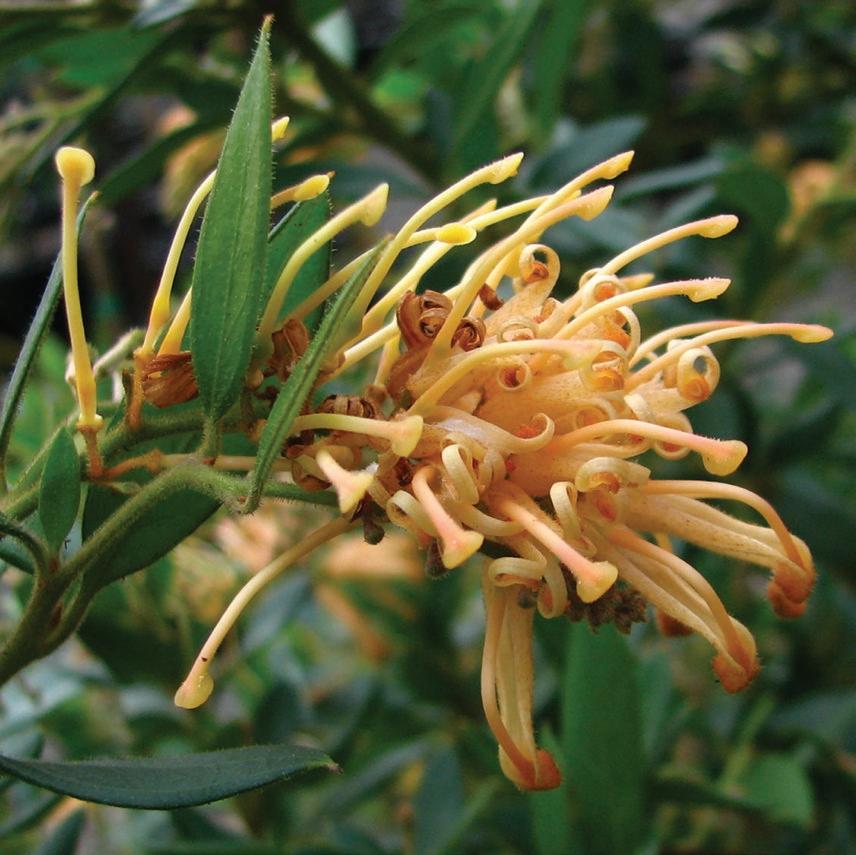

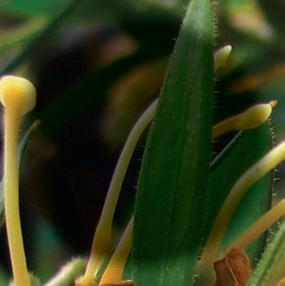
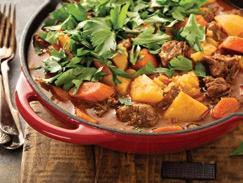




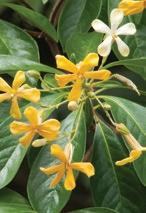


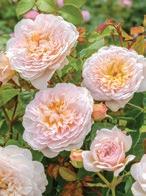




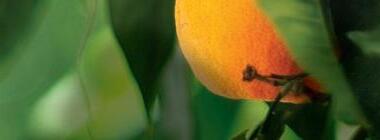










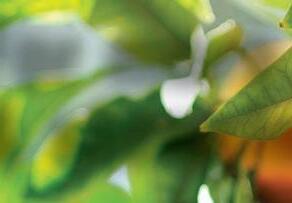




























































 Aglaonema ‘Valentine’
Maranta
Peperomia ‘Diamond’
Heart-leaf philodendron
Aglaonema ‘Valentine’
Maranta
Peperomia ‘Diamond’
Heart-leaf philodendron











































































 Great for small spaces
Great for small spaces



































































